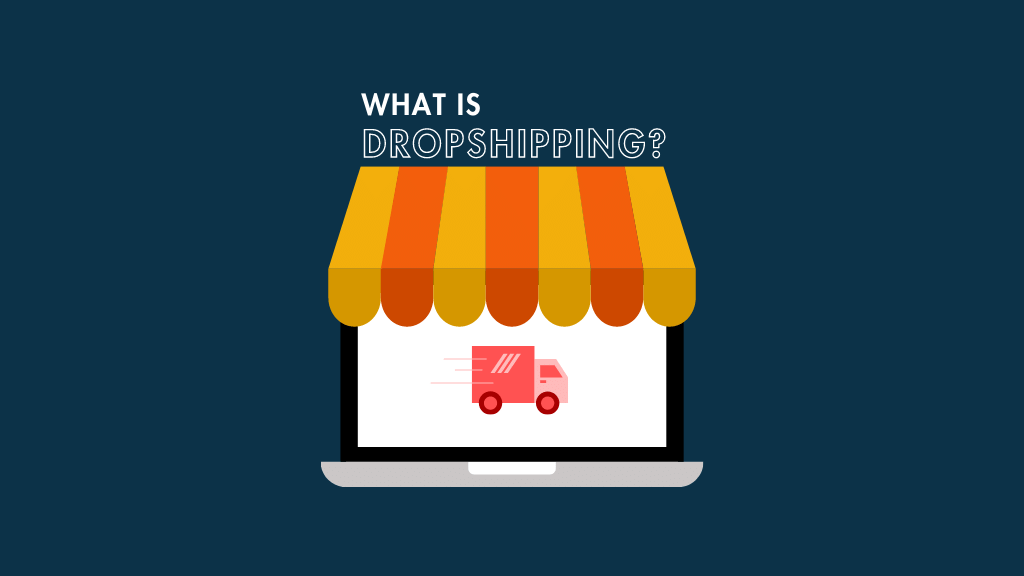
What is dropshipping? And should you use it as a business model? In this guide we answer these questions, discuss all the pros and cons of dropshipping, and give you a cheatsheet for starting a dropshipping business.
Let’s start with a simple definition of dropshipping:
ℹ️ Definition of dropshipping
Dropshipping is a business model where you don’t manufacture, purchase, store or deliver any products. Instead, you take orders for products via an online store, and pass them onto a supplier. The supplier then charges you, and sends the goods to the customer.
What are the advantages of dropshipping?
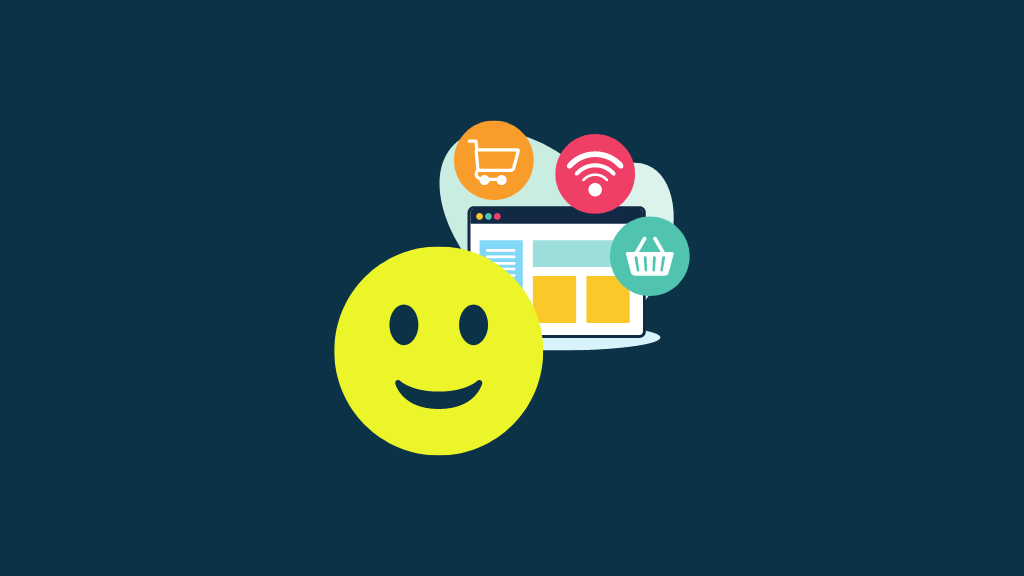
Dropshipping is a fast-growing industry, which in 2024 is thought to be in the region of $300bn in value, with forecasts estimating that its value could grow to as much as $476bn by 2026 (source: Statista).
There are several advantages of dropshipping that have led to this explosion in popularity.
1. Dropshipping doesn’t require much startup capital
The main advantage of dropshipping is that you don’t need much in the way of capital to start doing it.
When you dropship, you become a ‘middle man’: you mark up on products that you never buy, stock or deliver. And because you don’t have to spend a lot of money on inventory that you might never successfully sell, dropshipping is ultimately a low-cost, low-risk way to start a business.
2. The ongoing running costs are very low
In addition to providing a low-cost way to start a business, dropshipping also lets you run a business cheaply. It doesn’t require you to pay for storage space or staff; you can technically run the business by yourself using just a laptop and some fairly cheap software.
You will need a budget for advertising your store online — but how much you spend on this is entirely up to you (online advertising platforms generally let you spend as little or as much as you like on ads, and give you tools to see which ones are generating a return on investment).
3. You can sell a wide range of products
With dropshipping, there are no limits placed on what you can sell online. A huge number of dropshipping suppliers are available to supply you with a huge number of products — meaning that you have a lot of flexibility regarding the niche you want to dropship in, and a lot of different sales opportunities for your online store.
By contrast, if you’re manufacturing your own products, or sourcing them through more conventional means, you may find it harder to operate in certain niches, give your customers as wide a range of products to choose from, or create upselling opportunities.
4. You can run your business from anywhere
A dropshipping business doesn’t tie you down: so long as you have an Internet connection and a computer, you can run it from anywhere.
5. It’s not labour intensive
Unlike a business that involves selling your own products (or stocking somebody else’s), dropshipping is not labour intensive. You don’t need to worry about sourcing warehouse space; packaging goods; shipping products; dealing with product returns; or inventory management.
You will have to deal with customer enquiries, but overall, the workload involved with dropshipping is significantly smaller than many other online businesses.
6. It’s easy to scale
In order to scale certain types of online businesses, you need to invest heavily in staff, systems and inventory — and sometimes change your operations in very radical ways to ensure continued growth.
This is not really the case with dropshipping — aside from investing in marketing, you don’t need to spend much or change much to grow this type of ecommerce business. Most of a dropshipping business’ infrastructure can more or less stay as is — it’s just a case of putting more orders through it.
7. It’s easy to experiment with
Because setting up a dropshipping business is relatively risk-free, you get a lot of freedom to experiment and try things out. Changing your online store’s branding, product ranges and online advertising techniques doesn’t really involve much (if any) expenditure.
And, because dropshipping is for the most part a digital business, you can get a lot of easy-to-access data from these experiments — data that you can use to inform and develop growth strategies.
Disadvantages of dropshipping
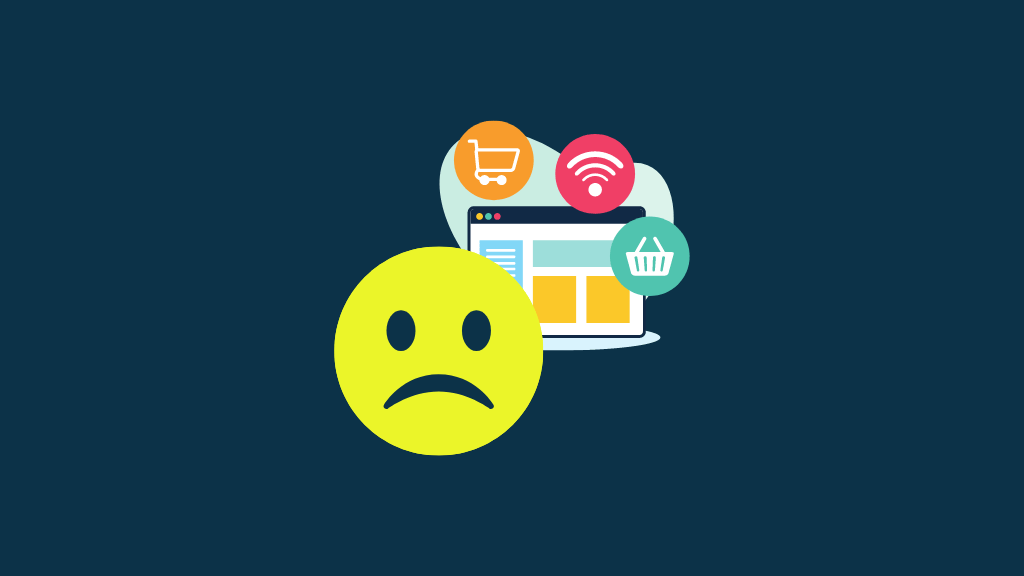
As you can see from the long list of advantages associated with it, dropshipping can be a very attractive business model. But it shouldn’t be viewed as a get-rich-quick scheme — it can be tricky to do dropshipping right, and there are some key ‘cons’ to consider as well as pros.
So, let’s take a look at the reasons why dropshipping might not be for you.
1. The profit margins can be very low
Because dropshipping is a low-cost, low-risk business model, the barriers to entry are low. This means that you will find a lot of other entrepreneurs entering the dropshipping space, marketing the exact same products as you, and competing heavily on price.
Accordingly, choosing the right niche for your dropshipping store, and gaining a very solid understanding of SEO is key to the success of a dropshipping business — and both these tasks can be time consuming.
2. It’s hard to ensure that the goods you’re selling are ethically produced
The advantage of making your own products, or sourcing them locally to stock and sell, is that you can gain a clear understanding of who made them and how.
With dropshipping however, you’re often completely in the dark about the working conditions in which your goods were made.
Many of the dropshipping apps available for the leading ecommerce platforms make use of dropshipping companies in countries where forced labor and counterfeit good production is not uncommon.
(Some of the print-on-demand dropshipping apps seem to be more proactive in ensuring ethical supply chains, however — examples of these include Printful and Printify).
3. You have limited control over the appearance and branding of your goods
With a lot of dropshipped products, you have little or no control over the appearance of your products: you are generally dealing with ‘off the shelf’ items.
So, if having a product range featuring your own brand is important to you, then dropshipping is not necessarily the best choice.
(That said, print-on-demand dropshipping offers more options on this front.)
4. Suppliers can be unreliable
With dropshipping, you’re often relying on suppliers that you don’t have a personal connection with, and that you can’t extensively vet.
Sometimes this can lead to:
- issues with product quality
- poor communication
- items going missing
- low-quality packaging.
And all this can result in unhappy customers.
5. Managing multiple suppliers can get complicated
If you’re working with multiple suppliers for your dropshipping business, you can end up with quite a complicated supply chain. Different suppliers may have different operational structures in place for shipping, processing and billing — and all this can add up to some potentially tricky admin for you.
These problems aren’t insurmountable, but take dropshipping away from being the ‘hassle-free’ business model that many people consider it to be.
6. Providing customer service can be challenging
When things go wrong with a dropshipping order, providing good customer service can prove a bit challenging. This is because when a problem arises, you are often relying on a third-party supplier — who you don’t know and who may be on the other side of the planet — to solve it.
This may lead to a long wait for a customer who will be puzzled as to why you, as the store owner, can’t simply resolve the issue or arrange a new delivery of a product yourself.
7. Shipping costs can be high
Depending on where your customer base and suppliers are located, you may face quite high shipping costs on your products.
For example, a lot of dropshipping suppliers are based in China, and if the bulk of your customers are based in the US, they — or you! — will have to pay quite a lot of money to get their products delivered to them.
So, how do I start dropshipping?

To start dropshipping, you’ll usually need four key things:
- an online store building tool
- a dropshipping app
- a domain name
- an online advertising platform.
Let’s look at each of these in turn.
An online store builder
As its name suggests, an online store builder (also known as an ecommerce platform) lets you build a website that sells stuff!

Typically, online store builders let you…
- build your own website
- access a range of themes that you can tweak to meet your branding requirements
- create catalogs of products
- connect your store to dropshipping apps (and by extension to dropshipping suppliers — more on this in a moment).
Popular online store builders include Shopify, BigCommerce, Squarespace and Wix; of these we feel that Shopify and BigCommerce generally provide the most comprehensive range of dropshipping tools, with Shopify offering more integrations with dropshipping suppliers than all of them.
(You can try Shopify out for three months here.)
Once you’ve picked a store builder to use, you’ll need…
A dropshipping app
In addition to an online store builder, you’ll need a dropshipping app to connect your store to a supplier.
Once installed, this will let you:
- select products from a supplier’s inventory
- list the relevant products on your site
- accept orders for them
- pass the orders onto your supplier for fulfilment.
You’ll find dropshipping apps in the app store of your chosen online store builder — the range available to you will vary by ecommerce platform, but popular ones include DSers (for Shopify); Modalyst; Spocket, Printful and Printify.
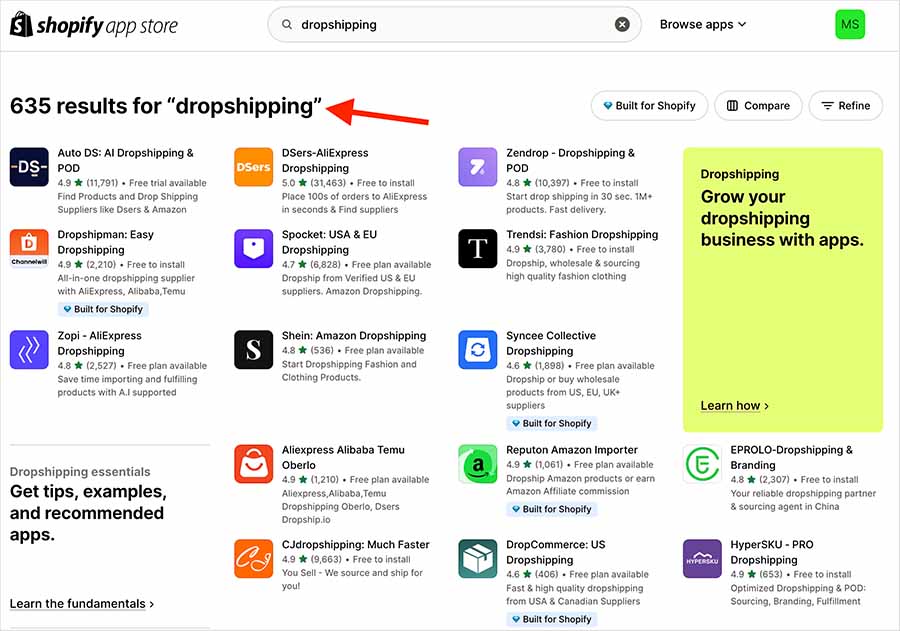
A domain name
In order to ensure that you come across as a legitimate business — and establish trust with potential customers — you’ll need to ensure that you are operating under a credible brand.
Accordingly, before you start dropshipping, you’ll need to put some time into creating a brand identity — deciding upon a business name, color schemes, logos, typefaces etc.
From a digital perspective, a key part of this involves purchasing a domain name for your business (yourstorename.com etc.). Without one, you’ll struggle to be taken seriously as an online merchant.
Many online store builders provide one for free for the first year as part of your subscription, or alternatively you can buy one from established domain name registrars (Namecheap, Gandi, etc.).
An online advertising platform
New dropshipping stores are highly unlikely to perform well in organic search results (search engine optimization takes time to plan, execute and take effect).
So, in order to get a dropshipping business off the ground, you usually need to invest in online advertising.
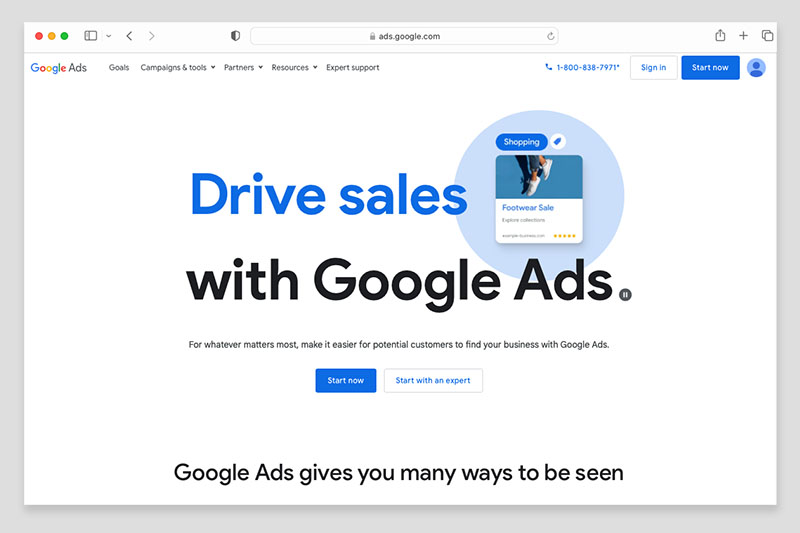
Typically this involves search engine marketing (SEM) and social media advertising — with Google being the obvious platform choice for SEM, and Facebook, TikTok and Instagram being the obvious choices for the latter.
While you’re here, download our free ecommerce e-kit
For a limited time, we’re offering our readers some excellent free tools. Sign up free to immediately receive:
- our e-book on how to start a Shopify store
- our online store comparison chart
- a downloadable cheatsheet on how to create an online store
- our SEO, blogging and ‘how to start a business’ cheatsheets
- extended free trials and discount codes for essential business apps
- our latest tips on ecommerce and growing a business
How to choose the best dropshipping suppliers
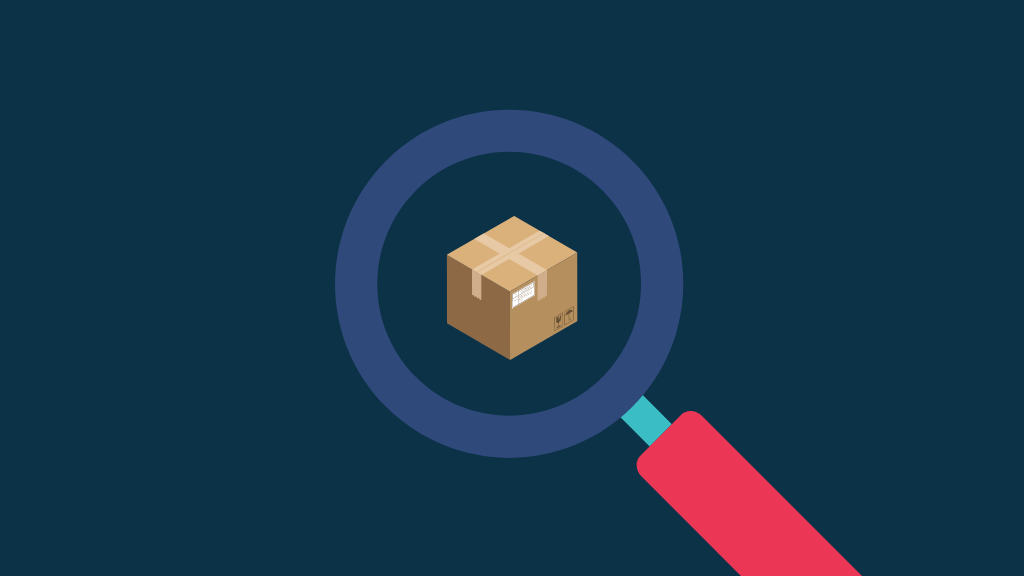
Before choosing a dropshipping supplier, it’s important to do as much ‘due dilligence’ regarding their business as possible.
To this end, there are several key questions that you should ask the dropshipping suppliers you’re considering working with (you’ll usually be able to do this by contacting a dropshipping app’s customer service team).
These questions are:
- Are their goods ethically produced?
- How are returns or damaged items handled?
- How long does it take them to fulfill an order?
- What customer service options are available?
- Are orders insured?
- How are fraudulent orders dealt with?
- Can they provide any references to you regarding their services?
- Can they sign a legal agreement / contract with you that offers you protection regarding all of the above?
If you can’t get satisfactory answers to the above questions from a dropshipping supplier, it’s probably time to try another one!
Dropshipping FAQ
What is dropshipping?
Dropshipping is a business model where you don’t manufacture, purchase, store or deliver any products. Instead, you take orders for products via an online store, and pass them onto a supplier. The supplier then charges you, and sends the goods to the customer.
How much does it cost to start dropshipping?
It depends on the platform, apps and domain name type involved, but you are typically looking at around $29 per month for an online store builder, $20 per month for a dropshipping app and $10 per year for a domain name. This equates to an annual basic running cost of $598. Of course, this figure just covers the ‘digital infrastructure’ for your business, and won’t include any advertising, admin or accounting costs that you will encounter as part of running it.
How do dropshippers make money?
In essence, Dropshippers make money by selling products online that are fulfilled by third-party suppliers — but marking up their prices.
Does dropshipping give you a passive income?
Although people often think of dropshipping as a hassle-free, passive income source, the truth is that running a dropshipping business can require considerable time and effort. There will always be a degree of admin, in terms of dealing with customers and suppliers; and you’ll need to factor in website maintenance too. However, done right, dropshipping can give you more ‘buck for your time’ than many other business models.
How do I find the right niche for my dropshipping business?
Finding a niche for a dropshipping business typically involves market research and competitive research — investigating the demand for particular product ranges, and the number of other established sellers of those products in that marketplace.
A good way to go about doing this involves keyword research. Using SEO tools like Ahrefs or Semrush you can find out how many people are searching online for particular products each month; who is dominating the search results for queries about those products; and how hard it will be to outrank them. Google Trends, which also gives you data on what people are currently searching for online, is another useful service for identifying potentially ‘hot’ products.
Where can I find dropshipping suppliers?
You’ll usually find dropshipping apps in the major ecommerce platforms’ app stores that let you work with multiple dropshipping suppliers. Well-known apps include DSers, Modalyst, Spocket, Printful, Printify and Art of Where.
Is dropshipping legal?
Yes, dropshipping is legal. But obviously, if as part of your dropshipping business you engage in fraudulent activities, or don’t adhere to advertising or data protection standards, you may find yourself on the wrong side of the law. As with any business venture it is always a good idea to discuss the legal aspects of your business with a lawyer before investing time or money in it.
Is dropshipping ethical?
It depends. If you are selling goods made using forced or child labor, then obviously it’s not. Similarly, if you are marking up products by unfair amounts, or selling poor-quality or dangerous items, this wouldn’t be ethical either. But if you are curating and selling high-quality products that were made by fairly-paid workers, then there is nothing wrong with the dropshipping business model.
(It should be noted that to promote a dropshipping store you will inevitably end up spending money with Facebook — a company with a questionable track record from an ethics point of view.)
What’s the best ecommerce platform for dropshipping?
Of the ecommerce platforms we’ve tested, we have found Shopify and BigCommerce to be the best solutions for dropshipping. Shopify has a particularly large range of dropshipping apps available for it.
Can you dropship on Amazon?
Yes — but Amazon places restrictions on dropshipping that make it more complicated than using a standalone online store builder like Shopify, BigCommerce or Wix. In essence, if a shipment from another retailer does not identify you as the seller of record, or if anyone other than you appears on packing slips, invoices, or external packaging, dropshipping on Amazon is strictly prohibited.
Can you dropship on eBay?
Dropshipping on eBay is permitted, so long as you are working with a wholesale supplier to fulfil customer orders rather than using ‘retail arbitrage’ to sell products. In other words, you can’t wait until somebody’s bought a product from your shop, then buy it from a retail store (for example, Walmart) at a lower cost, and have that retailer deliver that product.
How to start a dropshipping business — cheatsheet
Ready to start dropshipping? Here’s our quick tips on how to do it right.
1. Choose your business niche carefully
Use keyword research tools and Google Trends to see what product searches are popular and how strong the competition is.
2. Define your brand clearly
Decide upon a business name, buy a domain name, design a logo and define a brand identity (tools like Canva can help with the visuals).
3. Choose a good online store building tool
Research the best ecommerce platform for your needs. Remember that not all give you a great selection of dropshipping features to play with — for me, when it comes to dropshipping, it often boils down to a choice between Shopify and BigCommerce.
4. Choose a quality dropshipping app / supplier
Decide upon which supplier you’re going to use to fulfil your products. This is usually done by purchasing a dropshipping app from the app store of your chosen ecommerce platform. Remember to vet your supplier carefully — find out if their products are ethically produced, what their refund policy is, their general terms of business etc.
5. Create a strong marketing plan
Work out which online advertising platform you’re going to use as the primary means of promoting your products (Google, Facebook, Instagram etc.), and what interests, demographics and keywords are going to be the focus of your marketing campaign. Don’t just focus on advertising however: consider using SEO techniques to make your store more visible in organic seach results.
6. Launch your ecommerce store
Connect your online store to your domain name and launch your dropshipping business.
Related dropshipping and print on demand resources
Now, over to you!
Got any questions about dropshipping? Do leave them in the comments section below. We read them all, and will do our best to help.
Comments (3)
Hello and thanks for the great information on dropshipping. I am considering starting up a business. I have a question regarding connecting with the dropshipping companies. Did you say I can only access that information to connect with them once I purchase the app on Shopify?
My thoughts were to have a specific line of clothing that I have in mind with my logo to raise cancer awareness. I am wondering how I research finding a good dropship company to work with if you are willing to assist.
Thank you!
Tyler
Hey Tyler, hope all good! Thanks for your query. No, you don’t need to purchase an app to contact a Shopify dropshipping supplier. Most of them have contact details publicly available in their listing on the Shopify app store. If you go to the relevant app in the app store, and scroll down to the bottom of the info provided, you’ll usually see an email address for the supplier.
From the sounds of it you’re hoping to do print on demand clothing – this being the case I’d probably suggest checking out Printful. We have a Printful review here and a guide to using it with Shopify here.
Hope this helps!
Wow yes, very helpful! Thank you for getting right back to me. Appreciate the tip on where to look and the links. Hoping I can build a successful business utilizing this option. Thanks for all Chris!